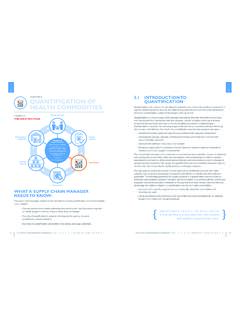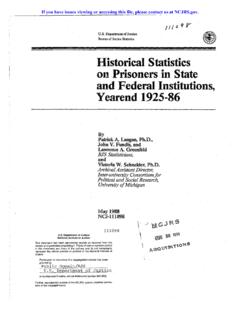Transcription of GLOBAL STATUS OF CCS 2020
1 GLOBAL S TATUS OF CCS THE NEED FOR GLOBAL STATUS OF CCS GLOBAL CCS FACILITIES UPDATE & POLICY & GLOBAL STORAGE REGIONAL ASIA GULF COOPERATION TECHNOLOGY & NATURAL CCS IN THE POWER NEGATIVE EMISSIONS CCS USThe GLOBAL CCS Institute (the Institute) is an international think tank whose mission is to accelerate the deployment of carbon capture and storage (CCS), a vital technology to tackle climate a team of over 30 professionals, working with and on behalf of our Members, we drive the adoption of CCS as quickly and cost effectively as possible; sharing expertise, building capacity and providing advice and support so CCS can play its part in reducing greenhouse gas diverse international membership includes governments, GLOBAL corporations, private companies, research bodies and non-governmental organisations.
2 All committed to CCS as an integral part of a net-zero emissions Institute is headquartered in Melbourne, Australia with offices in Washington DC, Brussels, Beijing, London and THE REPORTCCS is an emissions reduction technology critical to meeting GLOBAL climate targets. The GLOBAL STATUS of CCS 2020 documents important milestones for CCS over the past 12 months, its STATUS across the world and the key opportunities and challenges it hope this report will be read and used by governments, policy-makers, academics, media commentators and the millions of people who care about our report and its underlying analyses were led by Brad Page, Guloren Turan and Alex Zapantis.
3 The team included Jamie Burrows, Chris Consoli, Jeff Erikson, Ian Havercroft, David Kearns, Harry Liu, Dominic Rassool, Eve Tamme, Alex Townsend and Tony Zha Introduction ACRONYMSBECCS Bioenergy with CCSCCS Carbon Capture and StorageCCUS Carbon Capture Utilisation and StorageCOP Conference of the PartiesDAC Direct Air CaptureDAC C S Direct Air Capture with Carbon StorageEC European CommissionEOR Enhanced Oil RecoveryESG Environmental, Social and Corporate GovernanceEU European UnionFEED Front-End Engineering Design GHG Greenhouse GasGt GigatonneGW GigawattIPCC Intergovernmental Panel on Climate ChangeLCFS Low Carbon Fuel StandardMMV Monitoring.
4 Measurement and VerificationMt Million Metric TonnesMW MegawattNDC Nationally Determined ContributionR&D Research and DevelopmentSDS Sustainable Development ScenarioSMR Steam Methane Reformation SOE State Owned EnterpriseTWH Terrawatt HourUNFCCC United Nations Framework Convention on Climate ChangeUK United KingdomUS United States of AmericaUS DOE United States Department of Introduction CEO ForewordBRAD PAGECEO, GLOBAL CCS Institute2020 will long be remembered as a most challenging year with the emergence and spread of the COVID-19 pandemic.
5 The human toll has been awful. The economic impact will take decades to overcome. This has been a classic black swan event, not foreseen but with its arrival inflicting health, social, and economic damage on an exceptional scale. The world is still working through the management of the pandemic and with a vaccine not yet available, the need to learn to live in a world where COVID-19 is a reality, is fast presenting as the key challenge for governments, business and many have observed, with governments needing to devise and implement economic stimulus packages to lift their nations out of recession and get people back to work.
6 We have a once-in-a-generation opportunity to alter course and re-grow the GLOBAL economy in a climate friendly and environmentally sustainable manner. Right now, we have before us an opportunity to embrace and accelerate the energy transition to deliver the new, clean energy and clean industry jobs that will sustain economies for many decades to is evidence that both the private and public sectors are increasingly choosing the road to climate friendly policies and investments. A growing list of countries have committed to net-zero emissions around mid-century.
7 Alongside national government commitments, it has been remarkable to see in 2020 that despite difficult trading conditions, major multinational energy companies have made pledges to achieve carbon neutral outcomes by mid-century. For some this includes scope 3 emissions; those that are the result of the consumption (often combustion) of their products by customers. It has also been notable that significant Governments have included increased abatement ambition in their fiscal packages and that CCS has featured in several instances. This is welcomed and necessary.
8 It has been clear for some time that achieving net-zero emissions around mid-century and containing temperature increases to well below 2 C will require the rapid deployment of all available abatement technologies as well as the early retirement of some emission intensive facilities and the retro-fitting of others with technology like CCS. It is also clear that Carbon Dioxide Removal (CDR) will be required at large scale as overshooting carbon budgets is, regrettably, almost findings of this year s GLOBAL STATUS of CCS Report are consistent with these developments.
9 As we have been reporting for the past 2 years, the pipeline of operating and in-development CCS facilities around the world is again growing. This year continues the upward trajectory. The diversity of the industries and processes to which CCS is being applied is a continued testament to the flexibility of CCS to remove emissions from industries that are hard to decarbonise but which manufacture products that will continue to be essential to daily life around the sustained lift in activity around CCS and the increased investment in new facilities is exciting and encouraging.
10 But there is so much more work to do. Just considering the role for CCS implicit in the IPCC Special Report, somewhere between 350 and 1200 gigatonnes of CO2 will need to be captured and stored this century. Currently, some 40 megatonnes of CO2 are captured and stored annually. This must increase at least 100-fold by 2050 to meet the scenarios laid out by the IPCC. Clearly, a substantial increase in policy activity and private sector commitment is necessary to facilitate the massive capital investment required to build enough facilities capable of delivering these this year s report describes, in every part of the CCS value chain, substantial progress is being made.
















